Canadian Aquaculture R&D Review 2013
Table of Contents
Finfish - Freshwater
Striped Bass seedstock production and grow-out
The good market potential for farmed Striped Bass is evident, but has not been exploited in Atlantic Canada due to difficulties spawning and uncertainty on grow-out methods. We produced broodstock from eggs collected from the wild and since 2010 have achieved reasonably predictable and successful tank spawning, and high percent swim bladder inflation among larvae. Juveniles are fully euryhaline and have no early sexual maturity problems. Several thousand seedstock have been provided to a local farmer to assess grow-out potential in net-pens in man-made freshwater ponds. Food conversion and health of fish has been good to date. Ongoing work aims to further improve spawning success, define salinity requirements during the late-larvae/early juvenile stage, and determine optimum stocking densities for grow-out.
may 2007 – ongoing
Funded by: Canadian Centre for Fisheries Innovation (2009); NSDFA (2010)
project lead: Jim Duston (Dalhousie U.)
Project team: Paul MacIsaac, Scott Jeffrey (Dalhousie U.)
collaborators: North River Fish Farms Ltd. (Mike Cameron)
Contact: jduston@dal.ca
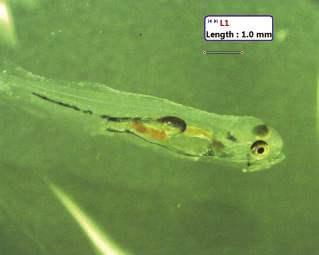
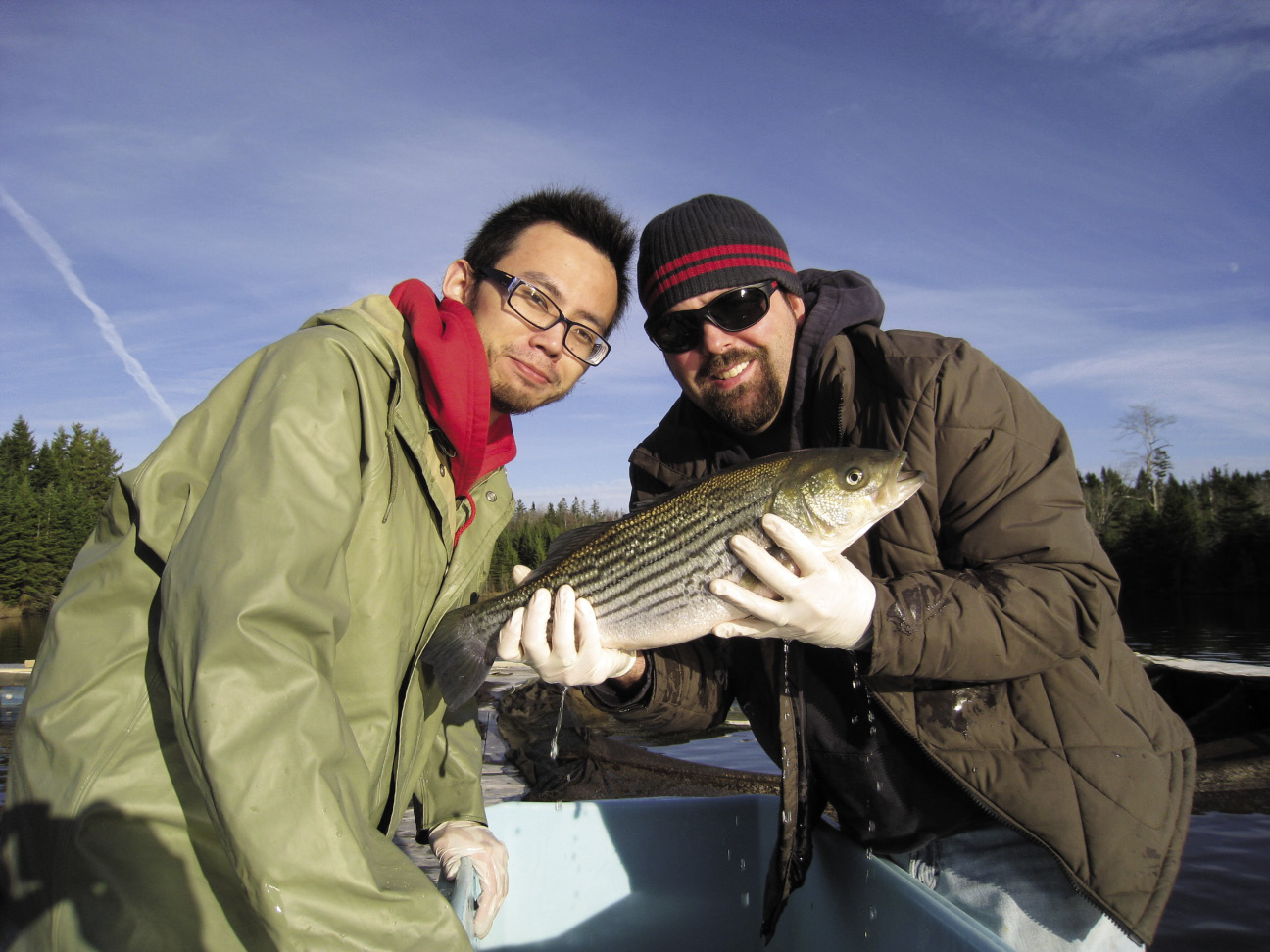
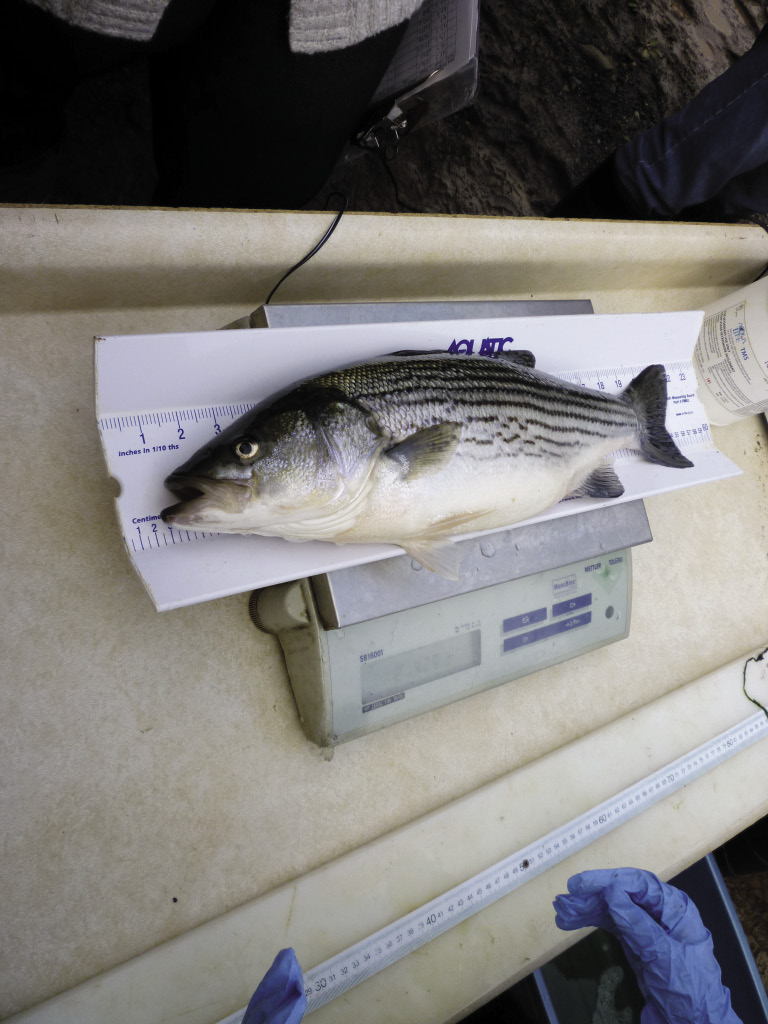
Sex-linked markers for Arctic Charr
This project integrated hormonal sex manipulation into a major breeding program for Arctic Charr in Atlantic Canada to produce all-female population. The specific objectives were to: 1) masculinise experimental families coming from F4' generation of Arctic Charr from the Fraser strain;
2) identify microsatellite molecular markers useful for identifying genetic sex in the experimental families of Arctic Charr to identify genotypic females in the masculinised experimental families for future broodstock;
3) fertilize eggs from normal females using indirect feminization techniques; and
4) produce all-female population of Arctic Charr broodstock of known pedigree and good growth performance.
dec. 2009 – mar. 2013
Funded by: DFO – Aquaculture Collaborative Research and Development Program (ACRDP) co-funded by: Merlin Fish Farm Ltd.
project lead: Brian Glebe (DFO)
Project team: Tillmann Benfey (UNB); Moira Ferguson (U. Guelph)
collaborators: Paul Merlin (Merlin Fish Farm Ltd.)
Contact: benfey@unb.ca
Effect of a shrimp by-product to replace fishmeal in diets of Arctic Charr at early stage
The objective was to evaluate the effect of a shrimp process residue meal (SPRM) on performance and health of Arctic Charr (Salvelinus alpinus) at early stage fed low fishmeal diets. The SPRM was obtained from shrimp by-product sludge in a seafood processing plant. The sludge was dried to produce the SPRM, which contained high concentrations of beneficial nutrients (71% proteins, 14% lipids, omega-3 (30% of lipids), >60 μg/g vitamin E). One practical (control) and three experimental diets were formulated with graded levels of shrimp by-product to replace 25, 50, and 100% of fishmeal. One commercial starter feed for salmonids was also used for comparison. Arctic Charr (0.90 g) were allocated to 30 100–L tanks. Growth and feed efficiency (FE) were higher for the fish fed the control and experimental diets than for those fed the commercial. At the end of the eight-week trial, fish fed 25% and 50% SPRM had significantly higher growth (TGC=0.127, final body weight =5.7 g) and FE (1.2) than fish fed 100% SRM or commercial feed (P≥0.05). Fish fed the control diet had higher performance overall (TGC=0.130, FE=1.3 and FI=4.0 g/fish). SPRM represents a valuable candidate ingredient in feeds for carnivorous fish.
APR. 2012 – June 2012
Funded by: Department of Agriculture, Aquaculture and Fisheries of New Brunswick co-funded by: Regional Development Corporation of New Brunswick; New Brunswick Innovation Foundation
project lead: André Dumas (CZRI)
Project team: Claude Pelletier, Gilles David, Sylvie Levesque (CZRI)
Contact: andre.dumas@irzc.umcs.ca
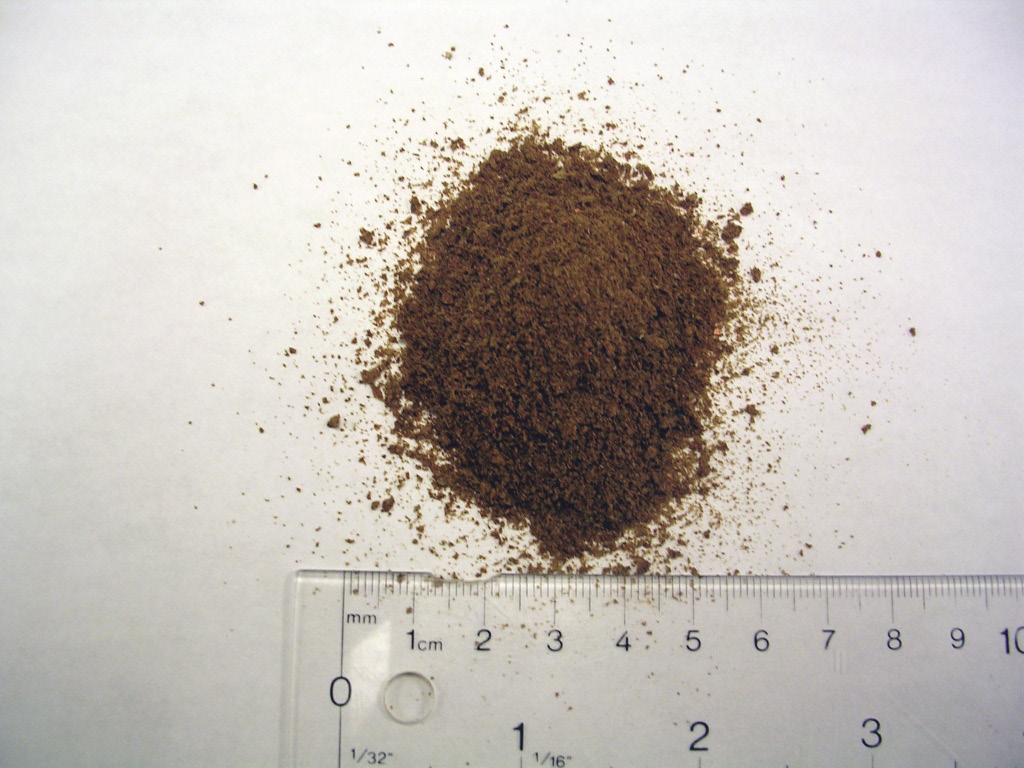
Sturgeon: Canada's diversified freshwater aquaculture industry
Phase 2
Twelve years of Target Marine’s investment in and developing White Sturgeon culture has successfully grown sturgeon from egg to over 100 kg in size and has resulted in essential expertise required to increase the diversification of the Canadian freshwater aquaculture industry. The large size and nature of the animals required an investment in developing and implementing improved innovative fish handling techniques.
The objective of this project was the implementation of a safe and efficient handling method for large sturgeon during sorting, staging, spawning, and harvesting. The project has successfully resulted in the development and implementation of a safe and efficient holding and handling method for moving large animals within the Target Marine facilities. The methods and equipment were implemented and evaluated during the sorting of maturing female fish destined for caviar production. The handling equipment will be fundamental for sorting different stages of production fish and handling broodstock into the future. It will also be used for harvesting the caviar fish. Under the highest environmental performance and traceability, Canada can become a new competitor in the global farmed caviar trade, while easing the pressure on endangered wild stocks.
APR. 2011 – Mar. 2012
Funded by: DFO – Aquaculture Innovation and Market Access Program (AIMAP)
project lead: Justin Henry (Target Marine Hatcheries Ltd.)
Project team: Justin Henry, Robert Haines (Target Marine Hatcheries Ltd.)
Collaborators: Joel Van Eenennaam (U. California Davis); Faculty and staff members (VIU — Int. Centre for Sturgeon Studies)
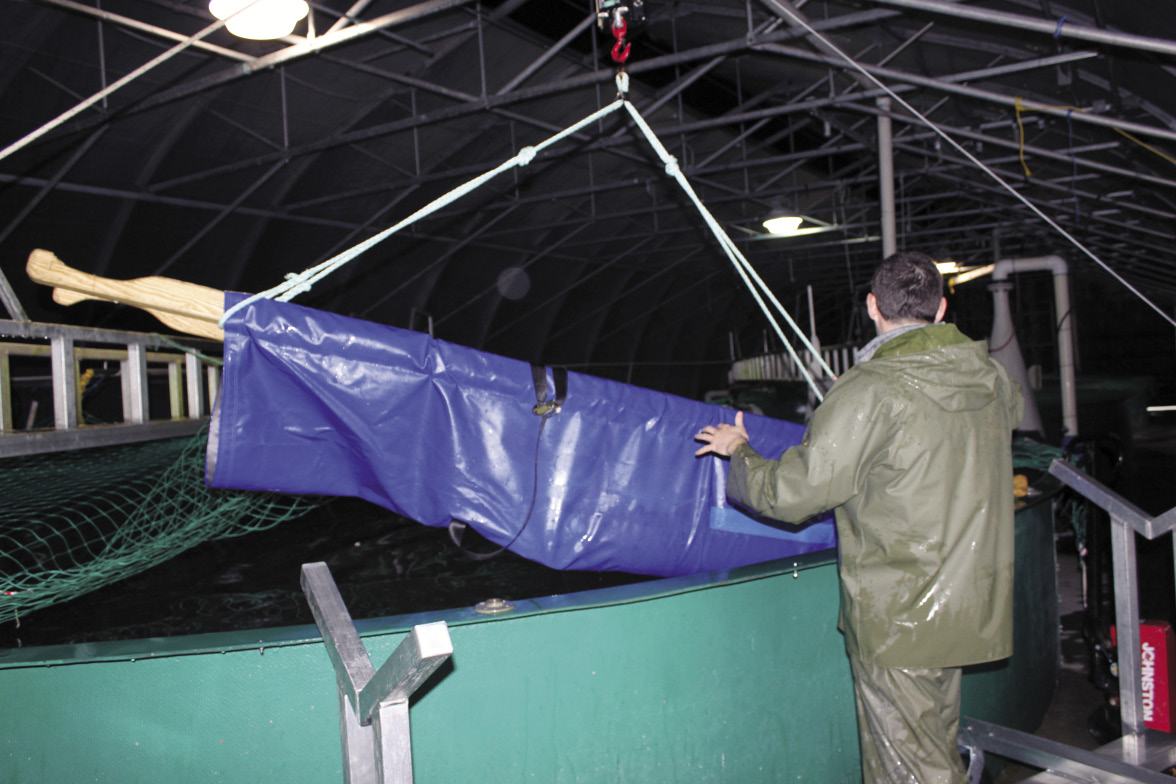
Pre-commercial assessment of the zootechnical performance and bioassay of Arctic Charr cultured in brackish water
The project objective was to assess the pre-commercial zootechnical performance and bioassay a batch of Arctic Charr (Fraser strain) grown in brackish water (average salinity of 12.5 ppt). The fish had an average initial weight of 60.7 g and were kept at an average temperature of 9°C for over seven months. The average final weight of the fish was 765.8 ± 215 g at 2028 degree-days. The feed conversion rate was 1.07 with an average feed ration of 1.33 percent, whereas the overall thermal growth coefficient was 0.26. Over the course of the project, the mortality rate was at the low level of 1.6 percent.
In a sample of 83 Arctic Charr with an average weight over 1 kg, no maturity was observed. The Arctic Charr condition index was 1.84, whereas the yield after evisceration was 88.8 percent.
These results allow us to conclude that the brackish water used in the project is well suited to the commercial farming of Arctic Charr.
Sept. 2011 – apr. 2012
Funded by: NB DAAF Co-fundED by: IRAP; CZRI; Marc Cormier; the town of Shippagan.
project lead: Claude S. Pelletier (CZRI)
Project team: Caroline Roussel, André Dumas, Joël Cormier, Gilles David, Claude Landry (CZRI)
collaborators: Michel Desjardins (MAPAQ)
Contact: claude.s.pelletier@irzc.umcs.ca

Development of an automatic distribution system for live feed, Microdiets and prophylactic treatments for sturgeon larvae and early juveniles
One of the major constraints in developing a viable sturgeon aquaculture industry in Canada is larval rearing and early juvenile production. Most sturgeons are fed a natural diet, usually Artemia (brine shrimp), for the first 3 to 4 weeks of their life following which they are gradually weaned on the artificial microdiet. Those technological operations are labour intensive; the diets are very expensive and overfeeding impacts tank hygiene and implicit survival.
In order to address and solve the problems related to live feeding, prophylactic (salt) treatments and weaning on artificial micro diets, Acadian Sturgeon and Caviar purchased and modified an automated microdiet dispenser (AMD) system from the Department of Fisheries, Western Australia, with the goal of optimizing the feeding and treatment processes, and increasing sturgeon juvenile production.
This technology will have important positive impacts that include: improved general productivity; improved tank hygiene and survival; improved growth and quality of the live sturgeon produced for sale and for our own stocks; reduced labour costs; and reduced effluent pollution by reducing overfeeding.
APR. 2011 – MAR. 2013
Funded by: DFO – Aquaculture Innovation and Market Access Program (AIMAP) Co-fundED by: National Research Council (NRC-IRAP); Skretting.
project lead: Cornel Ceapa (Acadian Sturgeon and Caviar Inc.)
Project team: Paymon Roustaian (Acadian Sturgeon and Caviar); Nick King (Skretting); Sagiv Kolkovski (Department of Fisheries, Government of Western Australia)
Contact: cceapa@acadian-sturgeon.com, www.acadian-sturgeon.com
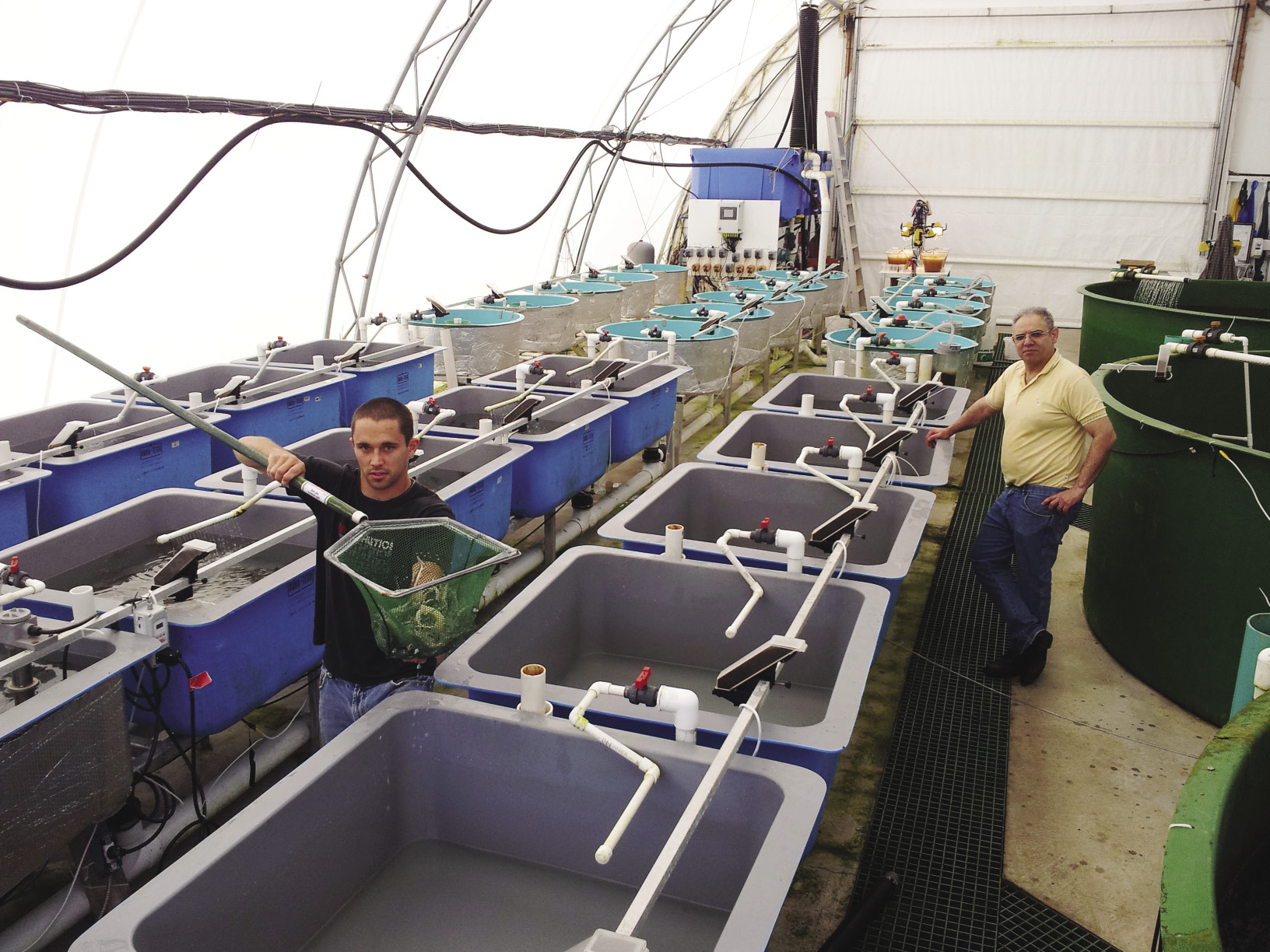
Sub-clinical effects and metabolism of the feed- borne Fusarium mycotoxin deoxynivalenol (DON) in Rainbow Trout
Contamination of feeds with mycotoxins is an issue of increasing importance in aquaculture due to the use of plant ingredients. In a previous study, we found that Rainbow Trout are extremely sensitive to low dietary levels of the Fusarium mycotoxin, deoxynivalenol (DON). Consequently, this study will seek to determine the basis of this sensitivity by examining the sub-clinical effects and metabolism of DON in Rainbow Trout. The effects of diets containing low, graded levels of DON from naturally contaminated and purified sources on pathological changes of various tissues/organs will be examined. Following the development of a robust enzyme assay, the contribution of UDP-glucuronosyltransferase (UDP-GT), a phase II conjugative enzyme, to species-specific sensitivity will be investigated in Rainbow Trout and common carp, a highly tolerant omnivorous species. Hepatocyte cell cultures and LC-MS/MS will be utilized to determine the pattern of metabolites in these species with particular focus on the glucuronide conjugate and de-epoxy DON (DOM-1), a widely studied metabolite of DON detoxification produced by ruminal and/or intestinal microbes. Elucidation of the sub-clinical effects and characterization of detoxification processes associated with DON exposure are critical for the development of nutritional mitigation strategies, preventative screening programs and suitable in vivo biomarkers of exposure.
sept. 2010 – sept. 2013
Funded by: Biomin (B.R.A.I.N program)
project lead: Dominique P. Bureau
Project team: Jamie M. Hooft, Rudolf Krska, Michael Sulyok, E.J. Squires, John Lumsden, Dominique P. Bureau (U. Guelph)
Development of techniques for accelerated growth, maturation and egg development for cultured Shortnose Sturgeon
Breviro Caviar is the only commercial producer of Shortnose Sturgeon caviar and meat products in the world. The company operates three hatchery and grow-out facilities located in St. Andrews, Pennfield, and Charlo, NB. Several years of sturgeon production and directed research at the Pennfield and St. Andrews sites has indicated that growth, maturation, and egg development of Shortnose Sturgeon could be enhanced significantly by maintaining the fish continuously in elevated water temperature and high oxygen/ low nitrogen environments. Currently, the culture infrastructure at Breviro sites does not allow economical heating of the water to produce optimal temperature environments and relies only on conventional oxygen infusion equipment.
This project proposes to build a commercial-scale recirculation system in Charlo, NB, to study and subsequently commercialize this system. The objective of the AIMAP project is to compare the growth, maturation rate and egg development of Shortnose Sturgeon held in two recirculation systems. It is suggested that the high temperature/oxygen environments will allow much more rapid progression of these biological parameters which are essential to enhance the economics of Shortnose and other sturgeon culture in Canadian environments.
apr. 2012 – mar. 2013
Funded by: DFO – Aquaculture Innovation and Market Access Program (AIMAP) co-funded by: Charlo Salmonid Enhancement Centre
project lead: Jonathan Barry (Breviro Caviar Inc.)
Project team: Jonathan Barry, David Cassidy, A. Kinney, W.E. Hogans (Breviro Caviar Inc.); Onassis Sanchez Diaz (SilkStevens Engineering); Michel Belanger (Charlo Salmonid Enhancement Centre)
Contact: Jonathan.Barry@Breviro.com
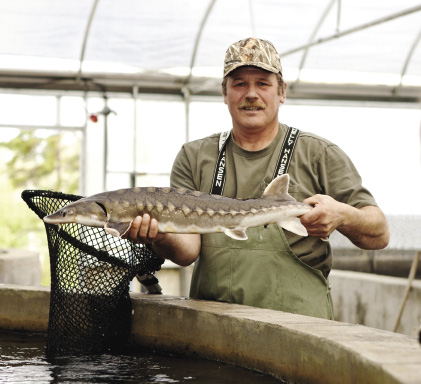
Sperm quality of hatchery-reared Lake Trout throughout the
spawning season
The objective of this study was to investigate variation in sperm quality metrics (motility, velocity, linearity, longevity, and density) of hatchery-reared Lake Trout, Salvelinus namaycush, throughout the spawning season. Seasonal variation in sperm quality was investigated using both a regression and repeated-measures approach. Sperm was collected from the same 16 individuals over four sampling periods, separated by 3-week intervals, spanning the natural spawning season. Regression analyses showed that 7 to 27% of the variation in sperm traits could be explained by seasonal variation, indicating that seasonality can have a significant impact on the quality of sperm. Significant positive linear relationships were found for percent motility and linearity at 5 s post-activation. Significant negative quadratic relationships were found for velocity at 5 s post-activation, longevity and density, while a positive quadratic relationship was found for linearity at 10 s post-activation. Repeated measures ANOVAs showed a significant effect of season for percent motility and linearity at 5 and 10 s post-activation, velocity at 10 s post-activation and longevity. The present study is important for optimizing fertilization protocols for hatchery production and can also be used to understand reproductive biology and ecology of wild Lake Trout stocks.
jan. 2010 – june 2011
Funded by: NSERC; Ministry of Research and Innovation postdoctoral fellowship grant
Project lead: Trevor E. Pitcher (U. Windsor)
Project team: Katelynn Johnson, Ian A.E. Butts (U. Windsor), Chris C. Wilson (Ontario Ministry of Natural Resources, Trent U.)
Contact: tpitcher@uwindsor.ca
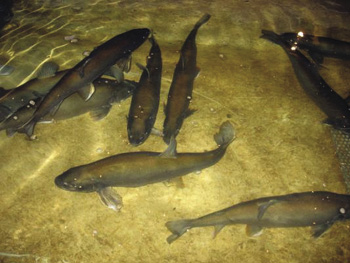
Optimization of commercial feed adapted for the Manitoba – Canadian Model Aqua-Farm
The project seeks to adapt and validate a commercially available feed and optimize its formulation for use in the newly constructed MB – CMAF, a state of the art recirculating aquaculture system. Feed formula adaptation centres on the addition of an ingredient that acts to stabilize and improve feces consistency thus improving solids removal from the system and ensure optimal water quality. Although economic analysis of feeding Skretting's BioTrout diet has demonstrated significantly reduced feed costs, preliminary tests revealed significantly lower stability of feces from trout fed this diet. Given these results, there would be considerable risk feeding this diet to fish in recirculating systems; increased suspended solids would affect growth performance and fish health, but also negatively impact biofiltration efficiency. Addition of ingredients that stabilize feces to the BioTrout diet permits the utilization of a cost effective feed in recirculation systems.
WellWater Aqua Ltd. located in Warren, Manitoba, is the site of the ongoing MB –
CMAF project, including a comprehensive environmental monitoring program onto which this project proposal is directed. Skretting Canada collaborates to provide support for diet development and Canadian Aquaculture Systems provides engineering and operational logistical support. Université Laval provides technical expertise and support for diet development and testing.
apr. 2011 – mar. 2013
Funded by: DFO – Aquaculture Innovation and Market Access Program (AIMAP)
project lead: Rudy Reimer (Well Water Aqua Ltd.)
Project team: Daniel Stechey (Canadian Aquaculture Systems); Grant Vandenberg (IPSFAD); Cameron Robinson, Jeff Eastman (MAFRI)
collaborators: Manitoba Agriculture, Food and Rural Initiatives (MAFRI); Skretting Canada; Canadian Aquaculture Systems; U. Laval
Contact: info@watersongfarms.com

Intensive production of Tilapia and Coho Salmon in a land-based, indoor, mixed-cell raceway, Recirculating Aquaculture System (RAS) — Phase 1 Tilapia
This project aims to convert and utilize a former mushroom composting building for the multi-species production of live market Tilapia initially and the additional production of Coho Salmon and other species (Arctic Charr) ultimately. The 70,000 square feet building has 12 large enclosed concrete "tunnels" that are ideally suited for use as the raceway portion of a mixed-cell raceway, recirculating aquaculture production system. Phase One will establish the initial conversion and commercial production of two tunnels for the production of live market Tilapia, for sale into Toronto Asian markets.
A unique aspect is the design version of the mixed-cell raceway for each tunnel that can be operated (with slight modifications) for either warm or cold water species in separate raceways, despite operating temperature requirements. This enables multiple species to be produced with a common design, and further enables switching of species mix should market conditions warrant. Further, as a result of new engineering developments that utilize low head oxygenation and new biofilter designs, recirculation is provided via a single recirculation circuit. This, along with more energy efficient oxygen generators, provides improved operating and cost efficiencies, particularly energy use, with some of the lowest production costs seen by the expert design team.
The improved recirculating aquaculture system mixed-cell technology design combines the advantages of hydraulic performance of round tank designs, with the advantages of better use of floor space and harvesting efficiencies of traditional raceway configurations. The proposed design provides efficient water use/reuse, zero environmental discharge off site (filter solids are managed via tank containment and "Geotube" dewatering), high security F1 indoor containment for biosecurity and development of new commercial species with minimal ecological risk, and low head pumping and bio-filtration technologies plus efficient on-site oxygen generation for minimal energy input.
apr. 2012 – mar. 2013
Funded by: DFO – Aquaculture Innovation and Market Access Program (AIMAP) co-funded by: Sand Plains Community Development Corp.
project lead: Kathryn Barbon (E&E McLaughlin Ltd.)
Project team: Kathryn Barbon, Ewart McLaughlin, Chris Hiney (E&E McLaughlin Ltd.); Gary Chapman (North American Tilapia (NATI) Inc.); John Holder (JLH Consulting)
collaborators: North American Tilapia (NATI) Inc.
Contact: kathryn@eemclaughlin.com
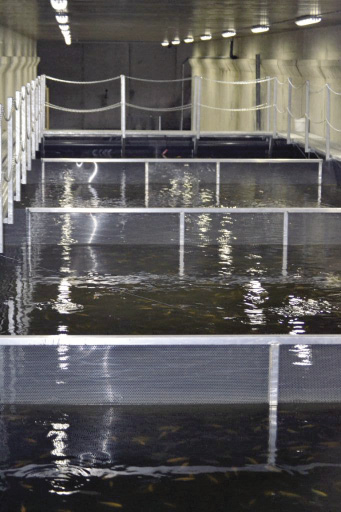
Effects of feed restriction on nutrient partitioning: priorities between body compartments in two size-classes of Rainbow Trout
Regardless of being in the wild or in culture conditions, food or feed restriction is quite common in fish. Causes include seasonal variations, dominance behaviour, poor water quality, nutrient deficiencies, diseases, etc. Fish have remarkably flexible growth, as they actively adapt and prioritize resources to meet their metabolic targets. However, these priorities remain poorly understood and may change according to life stage. The goal of this project was to quantify nutrient deposition in four groups of organs in two size-classes of trout. This information is important to understand better the coordination of nutrients deposition/mobilization, hence better predicting growth processes and nutrient utilization in a wider set of conditions. We show that restricted fish mobilize nutrients from mostly the white muscle, and preserve the red muscle as well as the viscera. Moreover, specific proteins are deposited in the muscle under different nutritional regimens, which may impact final product quality. Fingerlings of Rainbow Trout adapt to feed restriction by recruiting fewer muscle fibers while enlarging existing ones. Restricted juvenile strive to maintain body protein content, whereas fingerling attempt to maintain their protein and lipid contents. Taken together, these results highlight the different priorities between life stages, and sheds light into the orchestration of growth processes of different organs.
aug. 2009 – dec. 2011
Funded by: NSERC
project lead: Guillaume P. Salze, Dominique P. Bureau (U. Guelph)
collaborators: Hélène Alami-Durante (INRA – Pôle d'Hydrobiologie); Shai Barbut, Massimo Marcone (U. Guelph)
Contact: dbureau@uoguelph.ca

Ovarian fluid influences sperm performance
in Lake Trout
Studying interactions between gametes and their associated fluids can provide insights into the mechanisms that underlie the evolution of mating systems and can improve fertilization protocols for hatchery production. The objectives of this study were to determine whether: i) the presence and concentration of ovarian fluid affects sperm traits; and, ii) variation in sperm traits is due to male identity, female identity, and/or male × female interactions in Lake Trout. Sperm from four males were activated in both water and ovarian fluid from four females at two concentrations (10 and 15%). Results showed that the presence of ovarian fluid influenced sperm traits; however, no significant differences were detected between 10 and 15% ovarian fluid concentrations. Furthermore, sperm traits varied depending on male and female identity, such that some males perform better in the ovarian fluid of all females and that some females have ovarian fluid in which sperm traits are higher for all males.
jan. 2011 – aug. 2012
Funded by: NSERC; U. Windsor; Ministry of Research and Innovation postdoctoral fellowship grant
PROJECT LEAD: Ian A.E. Butts (U. Windsor)
Project team: Patrick M. Galvano, Katelynn Johnson, Trevor E. Pitcher (U. Windsor); Chris C. Wilson (Ontario Ministry of Natural Resources –Trent U.)
Contact: iana.e.butts@gmail.com
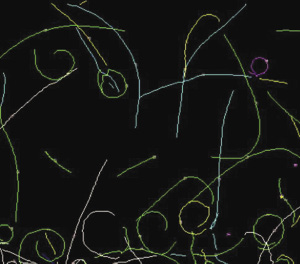
Establishment of a pedigreed Rainbow Trout broodstock using recirculating aquaculture technology and genotyping
While pedigreed broodstocks in aquaculture may already be well established in the United States and other countries, the targeted development of a selected pedigreed Rainbow Trout broodstock constitutes a significantly innovative initiative for Canadian freshwater aquaculturists. With this project, Lyndon Fish Hatcheries Inc. will continue to develop the first pedigreed Rainbow Trout broodstock in the country, which will ultimately work to reduce the vulnerability of Canadian growers who rely on eggs and fingerlings from selected broodstocks out of the United States. Lyndon's broodstock is characterized by a wide genetic base enabling year-round spawning and has been mass selected to improve production traits for approximately 20 generations with Canadian grow-out conditions in mind.
The main goal of this project is to identify individual broodstock across the entire Lyndon strain spawning cycle that has a superior growth genotype. This will be achieved using a combination of molecular genetic pedigree analysis and quantitative genetic evaluation methods. The marketable product for the industry will be superior growing progeny from selected broodstock. Additionally, funding has been obtained to look at coldwater disease susceptibility. A portion of the families created over the 2012/13 spawning season will also be evaluated for their resistance to coldwater disease.
apr. 2012 – mar. 2013
Funded by: DFO – Aquaculture Innovation and Market Access Program (AIMAP) co-funded by: Industrial Research Assistance Program (NRC – IRAP); Natural Sciences and Engineering Research Council (NSERC Strategic); Ministry of Agriculture, Food and Rural Affairs (OMAFRA)
project lead: Lynn Rieck (Lyndon Fish Hatcheries Inc.)
Project team: Lynn Rieck, Clarke Rieck (Lyndon Fish Hatcheries Inc.); Amber Garber (HMSC); Cheryl Quinton, Roy Danzmann, John Lumsden (U. Guelph)
Contact: sales.lyndonfishhatcheries@hotmail.com
www.lyndonfishhatcheries.com
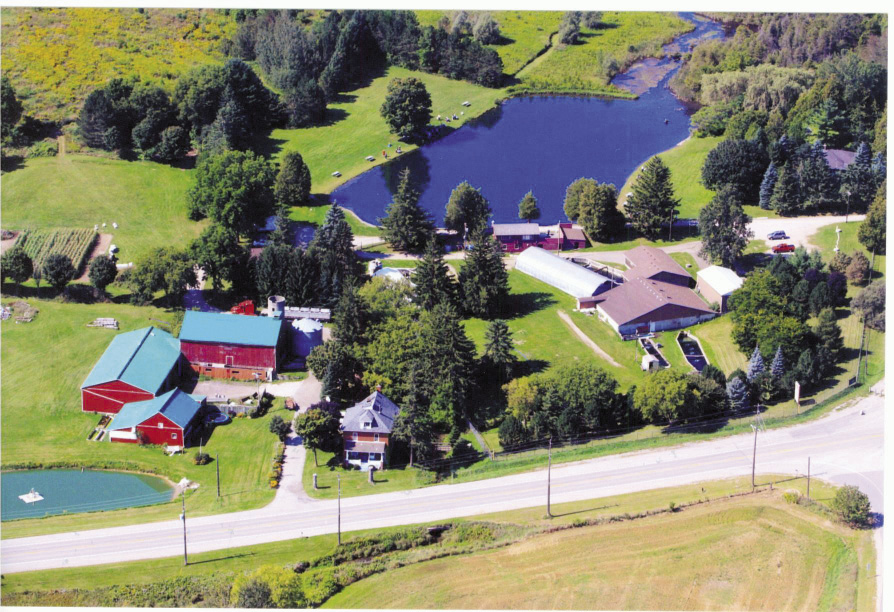
Development of hatchery and advanced fingerling innovations to compliment North Shore Fish Farms Ltd. advanced indoor Yellow Perch recirculating aquaculture system and grow-out technologies
North Shore Fish Farms Ltd. (NSFF), located in southern Ontario, has and continues to advance land-based indoor recirculating culture methods for sustainable production of Yellow Perch. As a result of the AIMAP funding, NSFF has been able to proficiently and successfully design, construct, troubleshoot and implement two additional isolated recirculating aquaculture systems that will aid in promoting and supporting early life stage development of Yellow Perch.
Each independent system/process was designed to control conditions that promote growth at specific life stages (fry and advanced fingerling), in addition to providing opportunity of supplemental cohort group separation within each specific stage of growth cycle to optimize development rates and efficiencies.
These innovations generated an immediate increase in sustainable production output of Yellow Perch at different size classes (fingerling, advanced fingerling and market size). Additionally, successful execution of this multi-tiered land based rearing system will accomplish reduced operating overheads that can be used as an economically viable operating model for urban aquaculture across our country.
apr. 2011 – mar. 2012
Funded by: DFO – Aquaculture Innovation and Market Access Program (AIMAP)
project lead: Frank Causarano (North Shore Fish Farms Ltd.)
Project team: Frank Causarano, John Causarano, Christine Causarano, Alex Causarano, Nicholas Causarano, Mark Night, Dale Tiessen (North Shore Fish Farms Ltd.)
Contact: northshorefishfarms@gmail.com
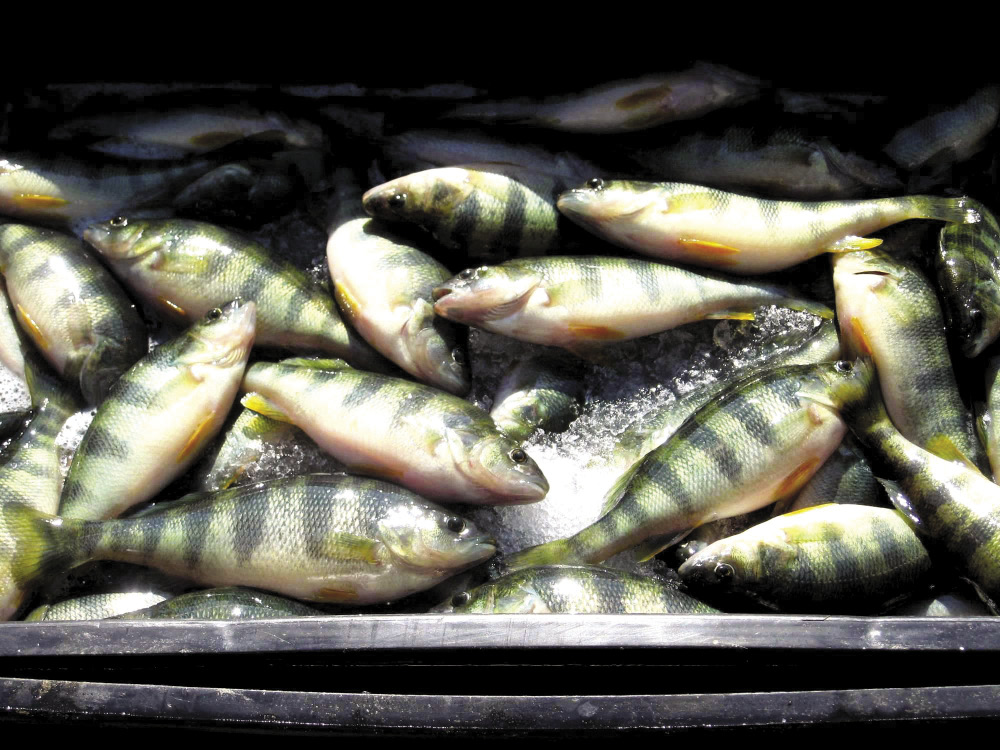
THE EFFECTS OF BISPHENOL A (BPA) ON REPRODUCTION, GROWTH DEVELOPMENT AND STRESS RESPONSE IN RAINBOW TROUT
Bisphenol A (BPA) has been measured in the Grand River, and the muscle of fish inhabiting this water body. While the accumulation of this chemical in the fetus leads to multi-generational effects in mammals, we know very little about long-term effects of BPA exposure in fish. Here we are proposing to test the multi-generational effects associated with BPA accumulation in fish eggs. The rationale behind this paradigm is that contaminants such as BPA, which accumulate in tissues, are transferred to the eggs from the mother. This may have huge implications in developmental programming events. Here we are asking the question whether BPA accumulation in eggs of Rainbow Trout, mimicking maternal transfer, can lead to phenotypes compromised growth and stress responses in the F1 generation. A multi-tiered approach comparing genes in trout phenotype along with changes in genome and metabolic pathways (termed "OMICs" in this proposal) in the F1 generation will be undertaken. Such "OMICs" responses will be compared with other physiological measures, including changes in hormone levels and their action, in response to growth and stress, as indicators of altered fish performance. Collectively, the results will allow us to develop novel risk assessment tools that will increase our capacity for predicting population-level damage. The knowledge and understanding of generational effects induced by BPA accumulation in eggs, and the development of markers that will predict these effects, will be useful tools for Canadian government managers monitoring the aquatic environment, and for industry environmental toxicologists.
This study will provide insight into the mode of action of BPA. Moreover, candidate genes that are targets for BPA will be identified and will assist with the development of molecular markers during early life stages for predicting long-term effects, including reproductive success. The research conducted as part of this study could be used to assess the long-term impacts associated with maternal transfer of chemicals commonly found in Canadian fresh waters, such as those released from agriculture and urban runoff. The study will not only establish the phenotypic traits that are disrupted by chemical exposure during a critical period of development, but will also identify mechanisms that will result in long-term effects in fish and in their offspring, to better predict the impact that chemicals and numerous xenobiotics have on aquatic populations.
jan. 2011 – feb. 2013
Funded by: NSERC Strategic Grant co-funded by: Ontario Ministry of Agriculture, Food and Rural Affairs
project lead: Richard D. Moccia (U. Guelph)
Project team: Alma Aquaculture Research Station (U. Guelph)
collaborators: Matt Vijayan, Oana Birceanu (U. Waterloo)
Contact: rmoccia@uoguelph.ca
www.aps.uoguelph.ca/aquacentre
Effect of composition of diet and the dynamic of digestion and absorption of amino acids on efficiency of utilization of dietary protein in Rainbow Trout
Fish feed formulation is increasingly relying on a variety of plant protein sources. These economical protein sources often have poor digestible essential amino acid (EAA) profiles. Closer attention need to be paid to adequately meeting the essential amino acid requirements of fish. It has been suggested that dynamic of digestion of protein and absorption of amino acids and metabolic interactions between amino acids may have a significant influence on the efficiency of amino acid retention by fish.
The focus of the project is on enhancing our understanding of the dynamics of digestion, absorption and utilization of amino acids as a function of dietary amino acid composition. The project involves a series of feeding trials and elaborate sampling protocols to look at amino acid digestion, absorption and retention. A model integrating information derived from the feeding trials and sampling protocols will be developed to describe the complex issue of the dynamic of digestion and absorption and efficiency of retention of amino acids in Rainbow Trout.
sept. 2010 – apr. 2014
Funded by: NSERC Strategic
project lead: Dominique P. Bureau (U. Guelph)
Project team: Afshin Gholami (U. Guelph)
Contact: dbureau@uoguelph.ca, afshin@uoguelph.ca
Characterize the response of vertebral bone tissue with a phosphorus deficiency in cultured Rainbow Trout through transcriptome analysis
In production, phosphorus (P) must be supplied through feed in sufficient but not in excessive quantity to ensure the animal's health and to prevent pollution. The overall objective of this study is to understand P metabolism at the molecular level in bone tissue so that it can be better managed. The administration of two diets, one P-sufficient and the other P-deficient, over a period of 27 weeks led to differences in the P status of the fish (Figure 1) and the occurrence of various types of vertebral anomalies. The alignment of some 610,000 sequences obtained through vertebral sequencing (454, Roche) yielded the assembly of roughly 22,000 contigs (Figure 2). Analysis of these results will be used to build the first reference gene catalogue and to characterize genes specific to bone tissue. Quantifying the expression of these genes through sequencing (HiSeq2000, Illumina) will then make it possible to determine which ones are involved in the demineralization process and the development of various types of anomalies. The use of molecular tools will be useful not only in formulating new diets consistent with environmental standards, but also in identifying individuals with lower phosphorus requirements.
jan. 2011 – dec. 2013
Funded by: Programme de soutien à des initiatives internationales de recherche et d'innovation (PSIIRI) co-funded by: DFO – Aquaculture Collaborative Research and Development Program (ACRDP); Société de recherche et de développement en aquaculture continentale (SORDAC); NSERC – Programme de bourse FONCER; U. Laval – Programme de bourse du Bureau International
project lead: Grant Vandenberg (U. Laval)
Project team: Marie-Hélène Deschamps, Claude Robert, Grant Vandenberg (U. Laval)
collaborators: Dominique Bureau (U. Guelph); Ann Huysseune, Eckhard P. Witten (Universiteit Gent); Arnaud Droit (CHUL, Canada); Jean-Yves Sire (Université Paris 6, France); Chantal Cahu, Dominique Mazurais (IFREMER, France); Kenneth Overturf, Ron Hardy (University of Idaho); Tom Hansen, Anna Wargelius, P.E. Fjelldal (Havforskningsinstituttet, Norway)
Contact: grant.vandenberg@fsaa.ulaval.ca
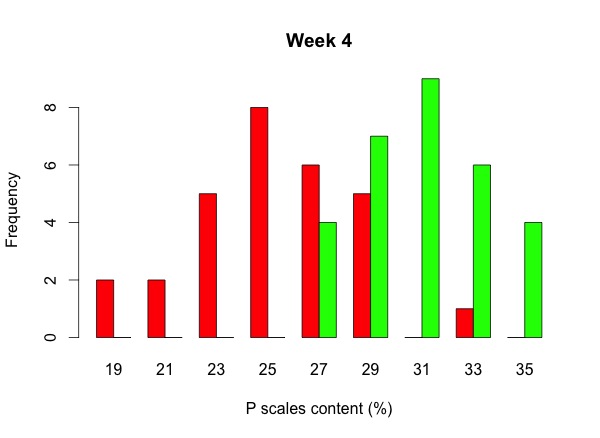
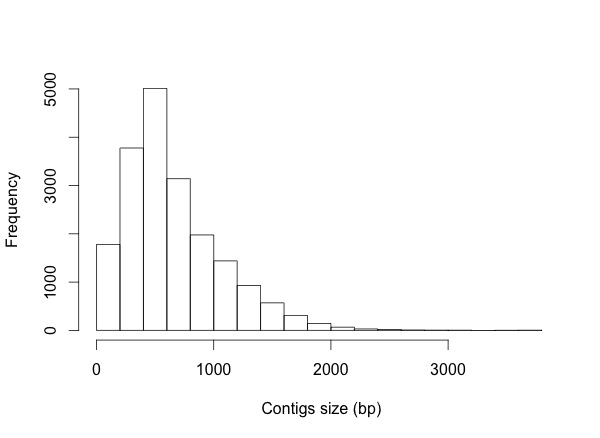
Development of strains of Arctic Charr, Brook Trout and their hybrids capable of effectively synthesizing linseed oil into polyunsaturated fatty acids (omega-3)
The purpose of the research is to produce the tools and information needed to develop strains of Arctic Charr (Salvelinus alpinus), Brook Trout (S. fontinalis) and their hybrids that would be highly capable of synthesizing omega-3 from a diet based on vegetable oil (linseed oil).
The development of this type of product represents an undeniable element of economic diversification for this agri-food industry. It would give producers the advantage of lowering production costs while substituting fish oils with vegetable oils. This would also help reduce pressure on wild stocks used in the production of aquaculture feed and thus reflect a vision of sustainable development, and so-called "organic" production.
To this end, the variability of the two enzymes responsible for the desaturation of fatty acids and the synthesis of long-chain omega-3 (i.e., delta-6-desaturase, elongase), will be characterized in three groups following a diet based on animal and vegetable oils. The correlation between the expression (mRNA) of both types of enzyme and the omega-3 concentration will be evaluated. With this information, we will be able to identify the strains or families with the greatest potential for maintaining a good long-chain omega-3 profile from a diet based on vegetable oils. The proposed project is intended to contribute to the sustainable development of aquaculture in Canada.
jan. 2012 – dec. 2014
Funded by: NSERC; RAQ
project lead: Pierre U. Blier (UQAR)
Project team: France Dufresne, Bernard-Antonin Dupont Cyr, Véronique Desrosiers, Arianne Savoie (UQAR); Grant Vandenberg (U. Laval); Nathalie Le François , Emiko Wong (Biodôme de Montréal); F. Dupuis (Aquaculture Gaspésie Inc.); M. Cantin (Aquaculture des Monts-de-Bellechasse Inc.)
Contact: pierre_blier@uqar.qc.ca

Determination of geosmin and 2-methylisoborneol concentrations in Rainbow Trout by in-vivo sampling using solid phase microextraction
The presence of off-flavours in farm-raised fish represents one of the most significant economic problems encountered in aquaculture related to product quality. The presence of undesirable odours or tastes (predominately geosmin and 2-methylisoborneol) in fish may cause a major reduction in the consumption of the products, or make them unsuitable for sale. The main objective of the project is to develop strategies to monitor the occurrence of geosmin and MIB in recirculating aquaculture systems using in vivo sampling method.
This will improve the organoleptic quality, the image and the economic value of aquaculture products, which contribute to the development of aquaculture in Canada. This highly-innovative approach (SPME in vivo sampling) has a clear potential to generate new knowledge in collaboration with Canadian companies and government organizations, with a high potential to have an industrial impact.
apr. 2012 – nov. 2012
Funded by: NSERC Strategic Grant co-funded by: Ontario Ministry of Agriculture, Food and Rural Affairs
project lead: Richard D. Moccia (U. Guelph)
Project team: Janusz Pawlisyn (U. Waterloo); Grant Vandenberg (Laval U.)
collaborators: Alma Aquaculture Research Station (U. Guelph)
Contact: rmoccia@uoguelph.ca
www.aps.uoguelph.ca/aquacentre
Optimization of omega-3 content and antioxidant capacity of flesh of strains of cultured charr
The ultimate goal of the project is to develop strains of Arctic Charr, Brook Trout, and their hybrids with a higher content of polyunsaturated fatty acids (omega-3) and high antioxidant capacity. The project will enable us to determine, first and foremost, whether incorporating an exogenous antioxidant (astaxanthin) into the diet of fish will stimulate their endogenous antioxidant defenses and, at the same time, serve as additional protection for the integrity of membrane fatty acids. Secondly, we will be able to determine the organoleptic properties of astaxanthin as well as its effectiveness in improving preservation period of fillets. If a correlation is discovered between the mRNA quantification of antioxidant enzymes, their activity and the omega-3 content of the flesh, this first genetic parameter might prove to be a valuable tool for the industry. It will enable quick and simplified identification of strains and individuals with the best endogenous antioxidant defense capacities and the highest omega-3 content as part of a strategic selection plan. The project is a preliminary step in the establishment of strains from Canada's aquaculture industry recognized as functional food that supports cardiovascular health. This would enhance the nutritional status of fish and could act as a lever for Canada's aquaculture industry.
jan. 2013 – dec. 2015
Funded by: Fonds québécois de la recherche sur la nature et les technologies (FQRNT); RAQ
project lead: Pierre U. Blier (UQAR)
Project team: France Dufresne, Véronique Desrosiers, Felix Christen (UQAR); Nathalie Le François (Biodôme de Montréal); Grant Vandenberg (U. Laval); Alain Leclerc (Merinov); Aquaculture Gaspésie Inc.; Aquaculture des Monts-de-Bellechasse Inc.
Contact: pierre_blier@uqar.qc.ca
Corn gluten meal and muscle pigmentation in Rainbow Trout
The characteristic red or pink colour of salmonid fish fillets results from the deposition of carotenoids pigments, mainly astaxanthin, within muscle fibers. This quality trait dramatically influences costumers' perception and willingness to pay. Therefore, in order to satisfy costumers' pigmentation standards, carotenoids pigments must be added in formulated diets since salmonids (salmon and trout) cannot synthesise them de novo. Dietary astaxanthin supplementation normally accounts for about 5-20% of total ingredient cost of feed.
Corn gluten meal (CGM), a highly digestible by-product of the corn wet milling process with high protein (60% crude protein) content, is widely included in formulated diets for many different fish species. Anecdotal evidence from aquaculture feed manufacturers suggests that high CGM dietary incorporation levels may negatively affect flesh pigmentation in salmonid fish as a result of its relatively high levels (100-500 ppm) of yellow xanthophyll carotenoids (mainly lutein and zeaxanthin). The main objectives of this project are: 1) to assess the effect of natural occurring yellow carotenoids from CGM on Rainbow Trout muscle pigmentation and astaxanthin deposition; and 2) to develop cost-effective techniques for reducing yellow pigment content of CGM.
may 2008 – ongoing
Funded by: National Science and Engineering Council (NSERC); Ontario Ministry of Natural Resources
Project lead: Patricio Saez, Dominique Bureau (U. Guelph)
Project team: El-Sayed M. Abdel-Aal (U. Guelph)
Contact: psaez@uoguelph.ca, dbureau@uoguelph.ca
Strategy for improving the beneficial properties of cultured fish for human health: inclusion of a new vegetable oil in the diet of trout
Over the next few years, 97% of the world supply of fish oil (FO) will be used in aquaculture feed. Adding vegetable oil to replace some or all of the FO in trout feed does not typically affect growth rate or feed conversion. However, oil derived from plant sources does not contain polyunsaturated fatty acids (i.e., long-chain omega-3 [n-3 LCPUFA]), whose properties are beneficial to heart health in humans. Soybean varieties high in stearidonic acid (SDA) were recently produced and could help the aquaculture industry tackle this problem. Adding soybean oil (SO) high in SDA to trout feed would increase the n-3 LCPUFA content in fish flesh. Consumption of such fish would result in positive indicators for heart health. More specifically, the project objectives are to: 1) document the zootechnical performance of trout fed a diet high in SDA-rich SO; 2) quantify the bioconversion of SDA to n-3 LCPUFA in trout fed a diet based on SDA-rich SO; and 3) characterize the impact of fish consumption on heart health indicators in hamsters.
apr. 2012 – apr. 2015
Funded by: Fonds québécois de la recherche sur la nature et les technologies (FRQNT); Merinov; Société de recherche et de développement en aquaculture continentale (SORDAC); RAQ; PIDDAED
project lead: Grant Vandenberg (U. Laval)
Project team: Yvan Chouinard, Hélène Jacques (U. Laval)
Contact: grant.vandenberg@fsaa.ulaval.ca
Evaluation of ration reductions on the growth, feed conversion, pigment retention and somatic indices of Rainbow Trout
In aquaculture, feeding is crucial to viability and success. As a rule, fish farmers rely on feed manufacturers to provide well balanced diets for their operations. While the farmer generally has little input into the composition of the diet, they determine the ration that is offered the fish to promote good growth and minimal waste. Underfeeding results in poor growth and production, while overfeeding results in wastage and water quality deterioration. The ration size is normally calculated as a percentage of the biomass present and feeding charts are widely available for Rainbow Trout. However, it is difficult to predict with any accuracy the exact biomass of the fish to be fed. Furthermore, many physiological factors (size, reproductive condition, social stressors, nutritional requirements, gastro-intestinal evacuation, etc.) and environmental factors (oxygen availability, waste metabolite concentrations, temperature, photoperiod, water velocity, etc.) result in day-to-day variations in appetite and these variations are very difficult to predict. As a result, many trout farmers rely on feeding to near-satiation with modifications being made to allow for ambient environmental conditions to achieve optimal feeding rates (the rate that results in the best growth and feed conversion ratio). Feeding to near-satiation may not be the best strategy utilized, if feed costs and environmental concerns are considered. The use of expensive trout diets would suggest greater financial returns are possible if reduced feeding rates are utilized to maximize the feed conversion rate even at the expense of growth rates.
The objectives of this study is to feed Rainbow Trout varying feeding rates from near-satiation to 67% of near-satiation to determine the effects of reduced daily ration on growth, condition factor, size variation, and feed conversion efficiencies, as well as such economically important processing traits as pigmentation, dress-out yield and fillet yield.
Feed can account for approximately 40–60% of a Rainbow Trout farm's operating costs depending upon the type and size of the farm and the feeding husbandry practices followed. Given this fact, significant cost savings could be realized if the farmer was able to reduce the daily feeding rate without compromising fish health, growth, size variation, pigmentation levels and carcass yield.
feb. 2012 – dec. 2012
Funded by: Martin Mills Inc. co-funded by: Ontario Ministry of Agriculture, Food and Rural Affairs
project lead: Richard Moccia (U. Guelph)
Project team: Mark Wagner (Martin Mills Inc.)
collaborators: Alma Aquaculture Research Station (U. Guelph)
Contact: rmoccia@uoguelph.ca
www.aps.uoguelph.ca/aquacentre
Strategies to prevent off-flavours in fish raised in closed-circuit aquaculture system
Geosmin and 2-methylisoborneol have been associated with off-flavour problems in fish and seafood products, generating a strong negative impact for aquaculture industries. Detection of geosmin producers in the fish flesh is normally based on chemical analysis (SPME–GC–MS). However, chemical analysis could not be used to prevent the occurrence of off-flavours. Using a real-time polymerase chain reaction (qPCR) method on water samples, we were able to detect and quantify geoA sequences that encode a germacradienol synthase involved in geosmin synthesis during Streptomyces development. To compare the influence of diet on off-flavour development in recirculating aquaculture systems (RAS), Rainbow Trout were fed with two commercial diets (Diet 1: high quality nutrient-dense diet; Diet 2: standard extruded diet known to produce friable feces). We found that the type of diet can influence the performance of Rainbow Trout and the appearance of off-flavour in a RAS. Some parameters such as suspended solids and phosphate concentration were involved in the process of proliferation of geosmin producers. The presence of gene geoA was confirmed much earlier in RAS containing fish fed with diet 2 than diet 1 (56 and 140 days, respectively) and chemical detection of geosmin in trout was observed 28 days after the gene detection. Our results show the advanced capacity of the gene-based method for the early-monitoring of off-flavours in fish reared in RAS.
oct. 2009 – oct. 2012
Funded by: NSERC co-funded by: Institut national de recherche scientifique (INRS); Interprovincial Partnership for Sustainable Freshwater Aquaculture Development (IPSFAD); RAQ; Société de Recherche et de Développement en Aquaculture Continentale (SORDAC Inc.); PIDDAED
project lead: Richard Villemur (INRS-Institut Armand-Frappier)
Project team: Yves Comeau (École Polytechnique de Montréal); Janusz Pawliszyn, Sanja Risticevic, Ziwei Bai (U. Waterloo); Grant Vandenberg, Alexandre Pilote, Daniel Proulx, Émilie Proulx (U. Laval); Marc Auffret, Karla Vazquez, Roger Dubuc (INRS-IAF)
collaborators: Kevin K. Schrader (US Dept Agriculture)
Contact: richard.villemur@iaf.inrs.ca
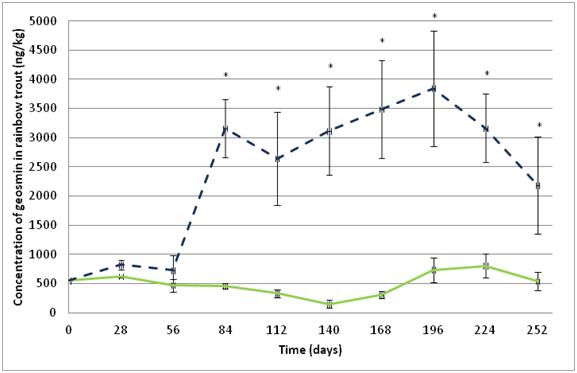
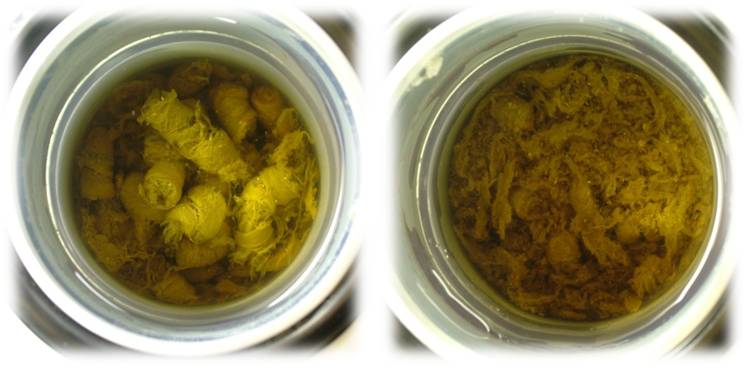
Histological observations on vertebral bone remodelling upon the appearance, recovery and deterioration of a vertebral anomaly in cultured Rainbow Trout fed a diet low in phosphorus
Vertebral anomalies are known to be a serious problem in salmonid culture. In 2011, some experiments conducted on juvenile Rainbow Trout showed that a prolonged dietary deficiency of phosphorus over a period of 27 weeks led to the occurrence of vertebral anomalies in most individuals (~ 90%). One of the factors complicating this type of study is that the appearance of these anomalies is not uniform in all individuals (high phenotypic plasticity). During these experiments, the caudal vertebrae (V31-V47) of trout evolved predominantly in four ways: 1) development and maintenance of a normal phenotype (17%); 2) development and maintenance of biconcave anomalies (16%); 3) development and recovery (from biconcave to normal phenotype, 24%); and 4) development and deterioration (from biconcave to compressed phenotype, 16%). The goal of our study is to identify the cell types found in individuals with extreme phenotypes and to quantify their respective activities in vertebrae having undergone different morphological developments. We will thus have a better understanding of the cellular mechanisms involved in the response to a phosphorus deficiency and their potential roles in vertebral bone remodelling leading to the occurrence of vertebral anomalies.
may 2012 – may 2014
Funded by: Ministère du Développement économique, de l'Innovation et de l'Exportation (MDEIE) – Programme de soutien aux initiatives internationales de recherche et d'innovation (PSIIRI); DFO – Aquaculture Collaborative Research and Development Program (ACRDP); Société de recherche et de développement en aquaculture continentale (SORDAC); RAQ – Programme de formation orientée vers la nouveauté, la collaboration et l'expérience en recherche (FONCER); U. Laval – Programme de bourse du Bureau International
project lead: Grant Vandenberg (U. Laval)
Project team: Noémie Poirier Stewart, Marie-Hélène Deschamps, Grant W. Vandenberg (U. Laval); Ann Huysseune, Eckhard P. Witten (Universiteit Gent)
Contact: grant.vandenberg@fsaa.ulaval.ca
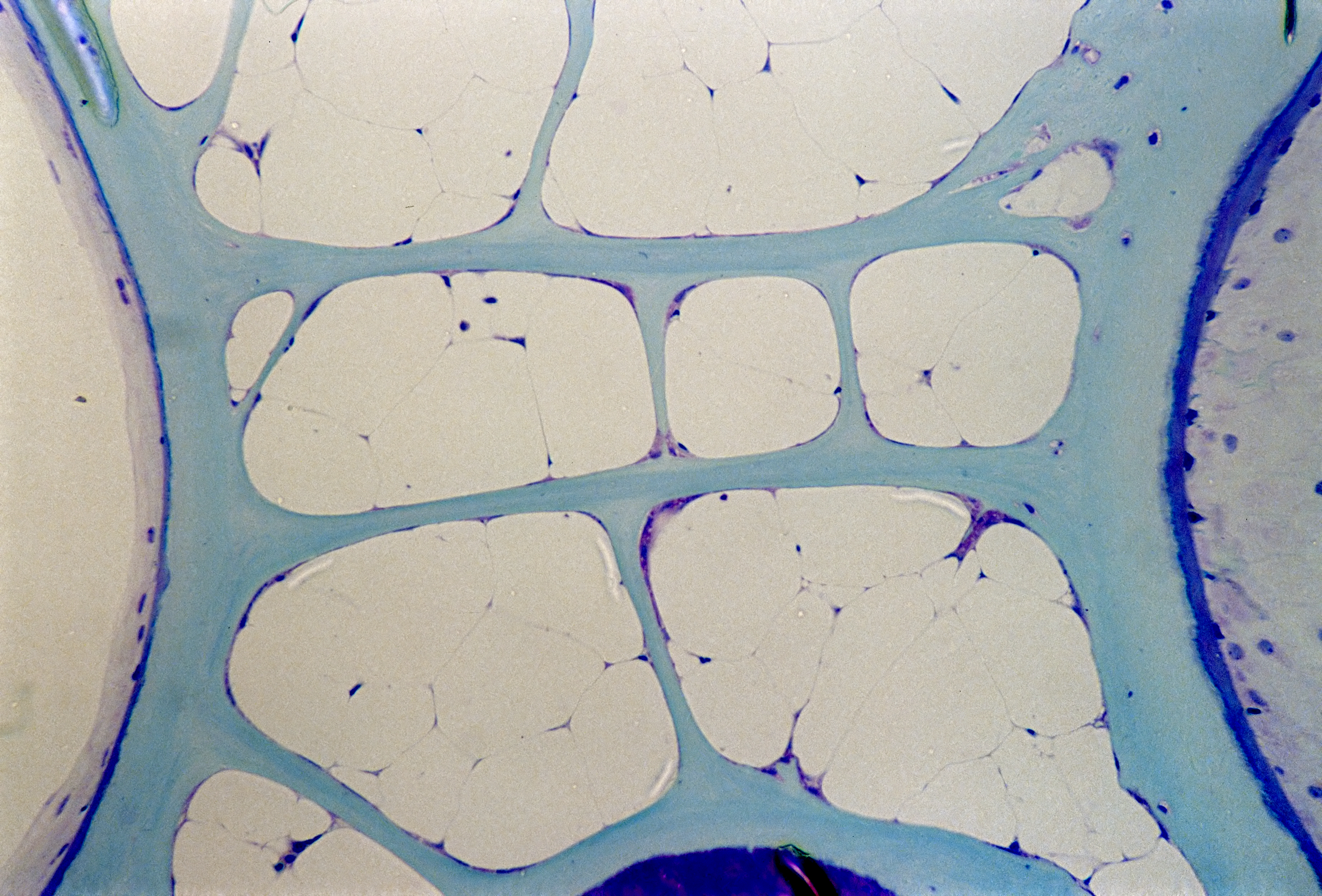
Study of the Brook Trout in terms of the functional and physiological genomic bases of performance characteristics, hybrid vigour and interest for aquaculture
Diversifying and improving the performance of new species used in aquaculture are priorities that will enhance our ability to compete. The Brook Trout is native to eastern Canada, with Quebec as the world's largest Brook Trout producer. The main objectives of this research program were to: 1) clarify the physiological and genomic characteristics of importance for aquaculture production; and 2) document the mechanisms of hybrid vigour and assess its value in Brook Trout production. We developed more than 300 single-nucleotide polymorphism (SNP) genetic markers located in the coding regions of the genome to produce the first genetic map for the Brook Trout. This allowed us to identify quantitative trait loci for characteristics relating to reproduction (sperm concentration and egg diameter), as well as growth and stress response. We also quantified the heritability of growth and stress response, and demonstrated that it varied depending on the strain and the breeding environment. In addition, we demonstrated the occurrence of hybrid vigour in Brook Trout for the first time (up to 88% more growth). However, growth varied depending on the breeding environment and the strains used to make hybrid crosses.
jan. 2006 – dec. 2011
Funded by: NSERC; Aquaculture Forestville; RAQ; Société de recherche et de développement en aquaculture continentale (SORDAC)
Project leaders: Louis Bernatchez (U. Laval); Céline Audet (UQAR)
Project team: Louis Bernatchez, Nicolas Derôme, Christopher Sauvage, Marie Vagner, Bérénice Bougas, Amélie Crespel, Mathieu Caron, Sarah Granier (U. Laval); Céline Audet (ISMER, UQAR); Daniel Cyr (INRS); Dany Garant (U. Sherbrooke)
Contact: Louis.Bernatchez@bio.ulaval.ca, celine_audet@uqar.qc.ca
Genetic and ecological impacts of brook trout stocking: issues affecting the ecological and economic sustainability of the aquaculture industry in Quebec
The overall objective of this project was to help implement new stocking guidelines put in place by the Quebec Ministère des Ressources naturelles et de la Faune (MRNF), which is responsible for managing the stocking of farmed Brook Trout raised by private producers in Quebec. The guidelines are intended to preserve the genetic integrity of native populations while ensuring the harmonious development of the area as well as the economic and ecological sustainability of the aquaculture and tourism industries, which depend directly on stocking. Given this overall goal, four objectives were targeted. First, we used the latest genomic tools to highlight the extent of adaptive genetic differences between farmed trout and wild trout. Next, we quantified the level of genetic contamination and phenotypic change caused by stocking and showed how the level of genetic changes in wild populations was significantly related to the scope of past stockings and the habitat quality of the water bodies where stockings had taken place. We also showed that introgression of certain domestic alleles of growth-factor genes was accelerated by natural selection in natural populations. Lastly, we developed a predictive model of economic consequences for the aquaculture industry based on the findings and their possible application.
jan. 2008 – dec. 2012
Funded by: NSERC – Strategic Subvention
Project team: Louis Bernatchez, Rémy Lambert, Amandine Marie, Fabien Lamaze (U. Laval); Dany Garant (U. Sherbrooke)
collaborators: Aquaculture Forestville; RAQ; FQGZ, SÉPAQ, MRNF
Contact: Louis.Bernatchez@bio.ulaval.ca
Construction and evaluation of a new sludge and floating materials concentrator by use of sedimentation and mechanical recuperation suitable for fish farming
Ferme piscicole des Bobines proposes the construction and evaluation of the effectiveness of a new type of concentrator to reduce the volume of washwater diverted to commercial fish farmers' recirculating accumulation tank. The effectiveness of mechanical treatments involving the use of drum filters currently being used is evaluated at approximately 60 to 65%. These treatments clarify water by continuously removing dumped waste. However, large volumes of water are needed to clean the membrane and it is therefore costly to use in accumulation tanks to filter all water over a long period. This new type of concentrator is innovative in its ability to automatically manage floating materials that form on system surfaces, thereby providing a better ratio of waste concentration. Waste diluted in washwater (400 m³/d) at the entry of the concentrator will be recovered in concentrated sludge (estimation at 9.6 m³/d), which will be directed into the accumulation tank. The amount of time that the sludge spends in the accumulation tank will therefore increase from 24 hours to over 20 days.
apr. 2011 – oct. 2012
Funded by: DFO – Aquaculture Innovation and Market Access Program (AIMAP) co-funded by: Société de recherche et de développement en aquaculture continentale (SORDAC)
project lead: Normand Roy (Ferme Piscicoles des Bobines Inc.)
Project team: Clément Roy (Ferme Piscicoles des Bobines Inc.)
collaborator: Dominic Marcotte (MAPAQ)
Contact: lesbobines@hotmail.com
www.lesbobines.com/pisciculture.htm
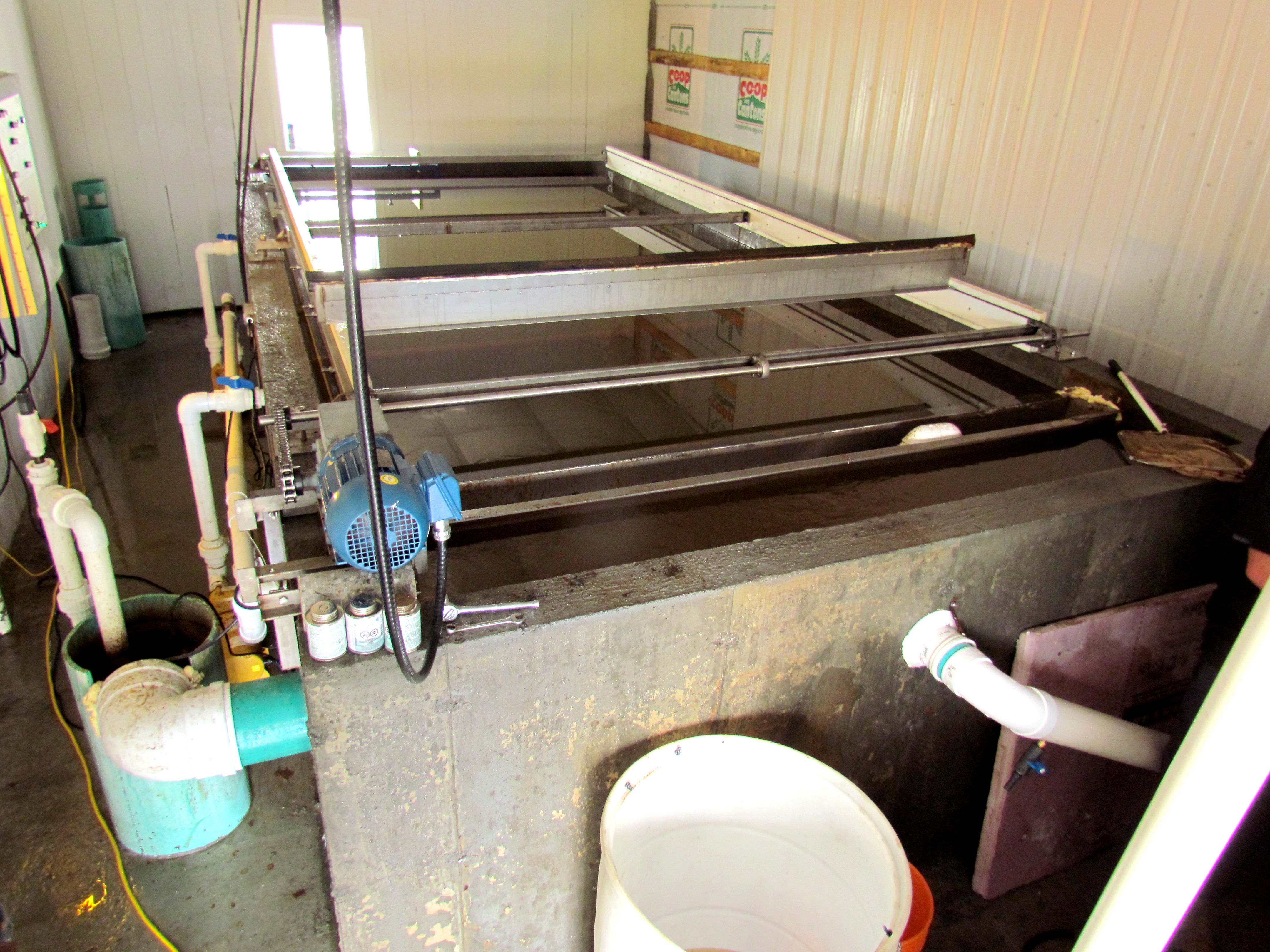
Nanaimo land-based Steelhead model aquafarm
By innovatively applying proven recirculation aquaculture techniques, Taste of BC Aquafarms Inc., in collaboration with PR Aqua Ltd. and Vancouver Island University (VIU), will design and construct a new land-based freshwater production system, based on the concept of the Canadian Model Aqua Farm. This will be the first model farm in British Columbia for stimulating growth in the freshwater aquaculture industry. It will be the first circular tank dual-drain recirculation aquaculture system (RAS) model farm in Canada. Proposed is a novel approach to a production Steelhead farm, incorporating a number of innovations in RAS technology, and innovative operational approaches to a freshwater growout facility.
This farm will be fully operational by the spring of 2013, with a targeted 100 tonne annual production. By incorporating the latest water recirculation technologies, the applicant anticipates a 15% net reduction of overall energy use, and a 20% reduction in total pumping head when compared to existing technology. The project is designed to recirculate almost 98% of system volume, increasing environmental performance by improving water conservation and reducing discharge volume. Furthermore, when combined with the continuous stocking program, the applicant anticipates that it will effectively double the production capacity of the farm.
APR 2012 – mar. 2013
Funded by: DFO – Aquaculture Innovation and Market Access Program (AIMAP) co-funded by: IPSFAD; BC Ministry of Agriculture
project lead: Steve Atkinson (Taste of BC Aquafarms Inc.)
Project team: Janet Atkinson (Taste of BC Aquafarms Inc.); KC Hosler (PR Aqua Supplies Ltd.); Mark Noyon, Don Tillapaugh (VIU); Daniel Stechey (Veridis Aquatic Technologies); Grant Vandenberg (IPSFAD)
collaborator: PR Aqua Ltd.
Contact: steve@freshbcsalmon.com
Design and validation of a new generation of rearing pond that permits rapid recovery of fish waste
The goal of this project was to construct and evaluate a new generation of rearing pond that allows for both water recirculation and the rapid recovery of wastes. To reduce construction costs and optimize waste recovery, the project was carried out in two phases. The aim of the first phase was to model the parameters of the pond using the computational fluid dynamics software Fluent. This made it possible to design and modify the parameters to determine the movement of the waste without having to invest time and money in the construction of one or more pilot units that would require numerous changes or improvements. The aim of the second phase was construction and validation. In combination with the simulation results, an optimally configured pond was constructed. In actual use with cultured fish, this work resulted in an 8% increase in phosphorus recovery. A comparative evaluation of costs concluded that the investment pays for itself in less than 5 years. Although the modelling was performed using a specific rearing unit, the expertise developed for aquaculture could certainly be used in all other Canadian rearing systems.
apr. 2011 – oct. 2012
Funded by: DFO – Aquaculture Innovation and Market Access Program (AIMAP) co-funded by: Société de recherche et de développement en aquaculture continentale (SORDAC)
project lead: Serge Gilbert (Pisciculture Gilbert)
Project team: Serge Gilbert (Pisciculture Gilbert); France-Line Dionne (l'École Polytechnique de Montréal); Dominic Marcotte (MAPAQ)
collaborators: Musandji Fuamba, Yves Comeau (Département des génies civil, géologique et des mines de Polytechnique – Université de Montréal)
Contact: dominic.marcotte@mapaq.gouv.qc.ca
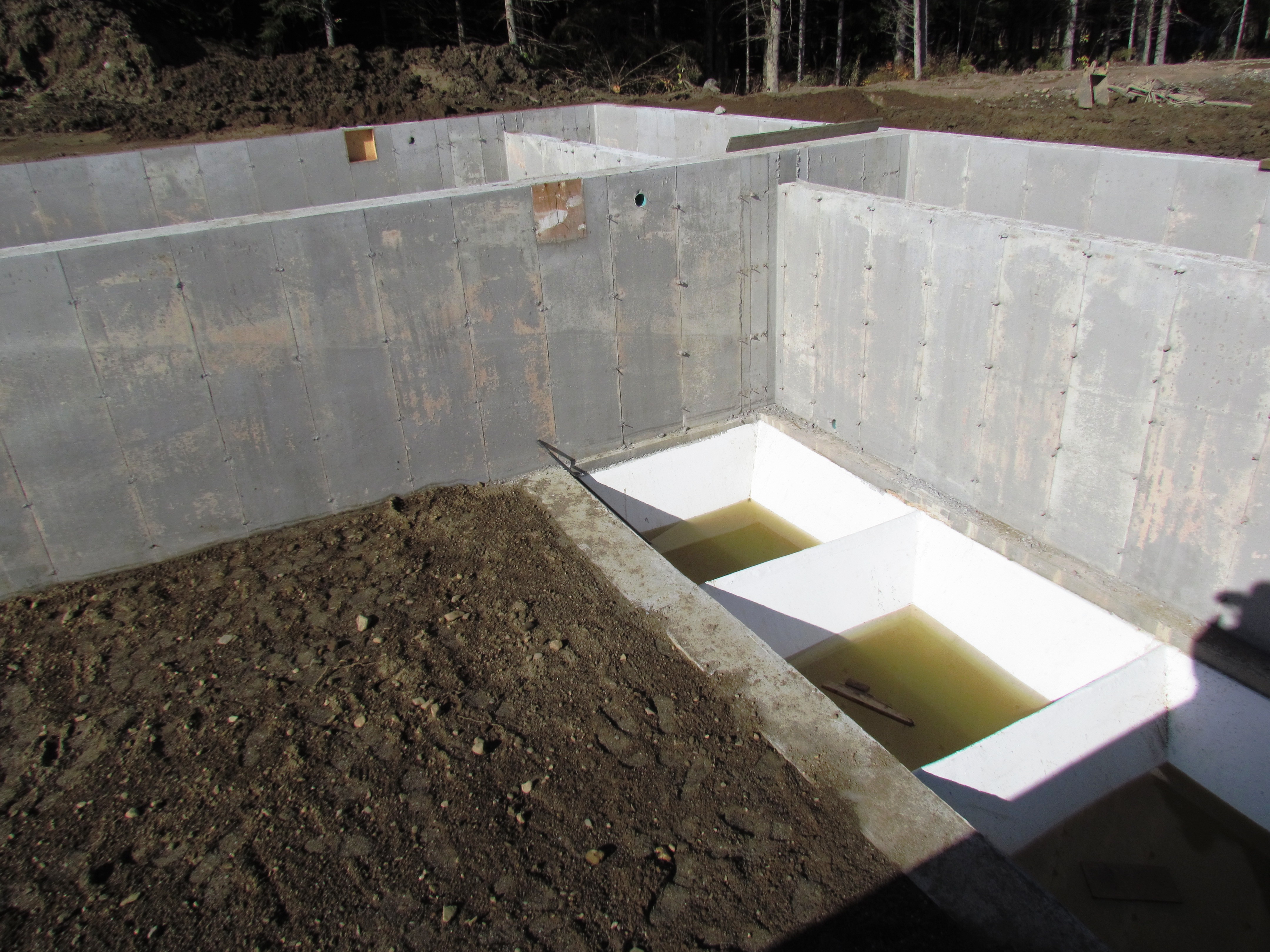
The effect of dietary intake of phosphorus on P status and bone metabolism of Rainbow Trout
New bone metabolism markers need to be developed to understand the development of skeletal abnormalities resulting from nutritional deficiencies in intensive salmonid culture.
Experiments conducted in 2011 showed that a diet highly deficient in phosphorus (P) does not necessarily affect growth. However, it greatly reduces the P status of fish (blood, scales, carcasses, and vertebrae) as well as the biomechanical performance of the vertebrae, which leads to the occurrence of anomalies in ~ 50% of 5-week-old individuals and ~ 90% of 15-week-old individuals. Despite an increase in the production of circulating hormones (calcitonin and parathyroid hormone-related protein) that stimulate bone mineralization and remodelling in the second week of deficiency, the mechanical stresses and low P levels in the blood lead to the development of spaced, compressed and biconcave vertebrae.
Samples will be analyzed shortly for morphology, histology and genomics. Correlations will help establish the mechanisms involved in the metabolism of phosphorus and bone tissue, as well as the best indicators for preventing the occurrence of vertebral anomalies in the formulation of new more effective and less polluting feed.
jan. 2011 – dec. 2013
Funded by: Ministère du Développement économique, de l'Innovation et de l'Exportation (MDEIE) – Programme de soutien aux initiatives internationales de recherche et d'innovation (PSIIRI); DFO – Aquaculture Collaborative Research and Development Program (ACRDP); Société de recherche et de développement en aquaculture continentale (SORDAC); RAQ; FONCER; U. Laval – Programme de bourse du Bureau International
project lead: Grant Vandenberg (U. Laval)
Project team: Marie-Hélène Deschamps, Nadia Aubin-Horth, Claude Robert (U. Laval); Dominique Bureau (U. Guelph); Ann Huysseune, Eckhard P. Witten (Universiteit Gent); Jean-Yves Sire (Université Paris 6); Chantal Cahu, Dominique Mazurais (IFREMER); Kenneth Overturf, Ron Hardy (U. Idaho); Tom Hansen, Anna Wargelius, P.E. Fjelldal (Havforskningsinstituttet, Norway)
Contact: grant.vandenberg@fsaa.ulaval.ca
Implementation of commercial mode zootechnical measures for maximizing rearing productivity of Arctic Charr
The domestication characteristics of the Arctic Charr (Salvelinus alpinus), especially its disease resistance, its growth performances at low temperatures, its tolerance to crowding and its association with a high-end market, make it a species with high potential for aquaculture diversification in temperate and northern climates. The emergence of commercial production of this species on a national scale has long been stymied by differences in growth rates and variations in the supply of juveniles of good quality and in sufficient numbers. A 2001 project report makes several recommendations to remedy the situation and promote Canadian aquaculture diversification as a result. Among its recommendations is the development of selective breeding programs focused on improving growth performances and assessing the genetic variability within broodstock populations in major commercial strains. The primary objective of this project is to implement innovative zootechnical measures in terms of the productivity of commercial Arctic Charr aquaculture operations. The recommended measures are aimed at improving reproduction (spawner pairing) and nursery (water velocity) conditions. The specific objectives are: 1) to estimate the genetic variability of available Nauyuk strain in Quebec for possible use in a genetic improvement and a strain development program; 2) to identify, through assessing the level of relatedness between spawners, optimal pairings/crosses based on the work of Ditlecadet et al. in 2006 and 2009 and likely to result in growth gains; and 3) to apply, during the initial development stages, an experimental velocity to significantly improve growth.
june 2010 – mar. 2011
Funded by: DFO – Aquaculture Collaborative Research and Development Program (ACRDP) co-funded by: Aquaculture Gaspésie inc.
project lead: Nathalie Le François (UQAR)
Project team: France Dufresne, Pierre Blier (UQAR)
collaborator: Francis Dupuis (Aquaculture Gaspésie inc.)
Contact: nle_francois@ville.montreal.qc.ca
Research to improve the quality of eggs and early development of the Yellow Walleye for aquaculture in Quebec
The Yellow Walleye (Stizostedion vitreum) is a freshwater fish native to North America. In Canada, its range includes the tributaries of the St. Lawrence River in Quebec. The production of this species is always dependent on the natural environment. Problems associated with egg quality problems as well as embryonic and larval development of eggs from captive brood fish remain a major issue. Experimental trials have shown that eggs from captive brood fish are of lower quality than those from wild brood fish. This problem may be attributable to the brood fish diet. The project aims to improve Yellow Walleye production by developing various kinds of diets for captive brood fish to identify nutritional needs and obtain optimal quality eggs and good embryonic development. An appropriate sampling system will be developed on an industrial site to study the link between brood fish feed, egg quality, embryonic development and larval survival. Batches of eggs from brood fish on different diets will be separated and monitored until the larvae can feed themselves. The project will develop new stock management techniques that will promote strategies leading to greater diversification of fish production in Quebec.
sep. 2011 – dec. 2013
Funded by: Société de recherche et de développement en aquaculture continentale (SORDAC); RAQ; Fonds québécois de la recherche sur la nature et les technologies (FQRNT)
Project leader: Réjean Tremblay (UQAR)
project team: Céline Audet (UQAR); Grant Vandenberg (U. Laval); Marco Blanchet (station piscicole Trois — Lacs)
Contact: Rejean_Tremblay@uqar.ca
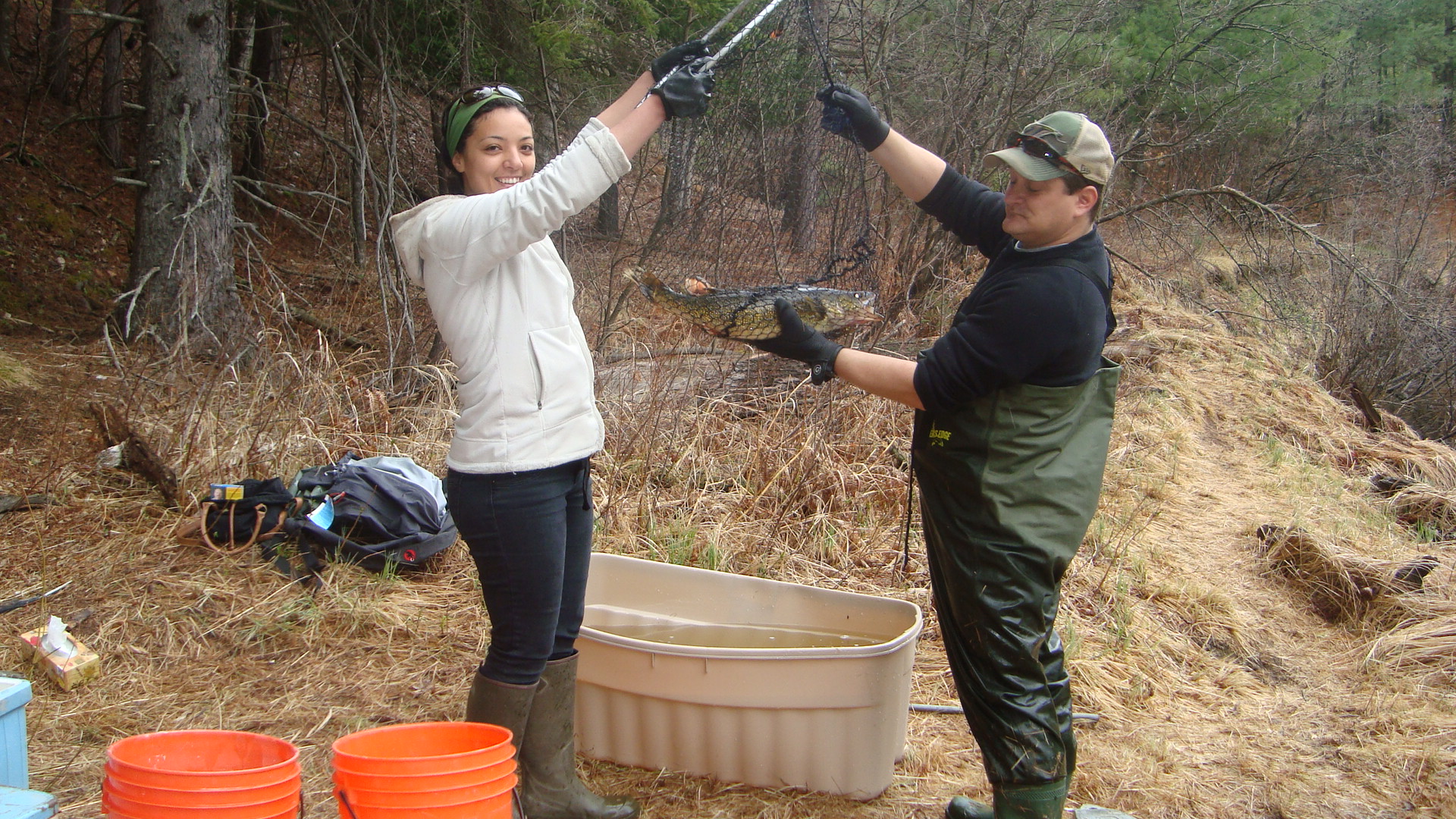
- Date modified: